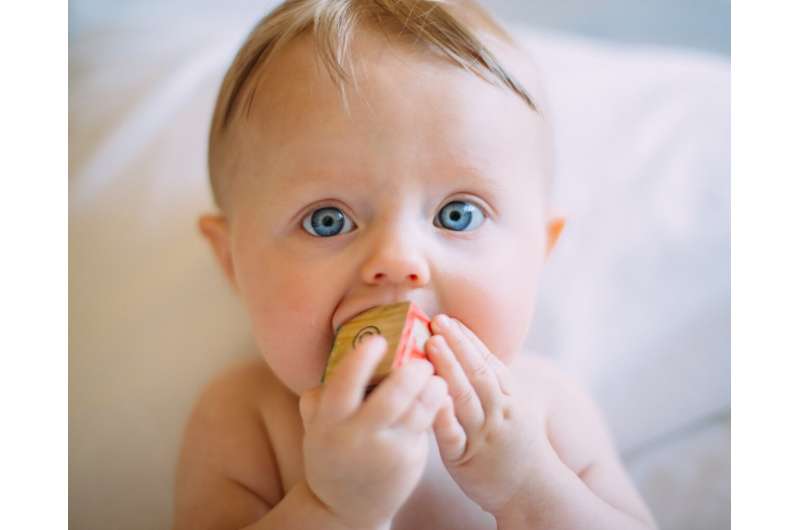
In a new study published in Philosophical Transactions of the Royal Society B, scientists from Vienna-based Central European University have found that babies as young as 14 months old can consider several alternatives on their own if they have been shown an object that is not clearly recognizable and leaves several interpretations open.
By measuring the pupil diameter of infants, the research performed by Nicolo Cesana-Arlotti (John Hopkins University), Balint Varga and Erno Teglas (both from Central European University) provided evidence of increased mental effort when infants were exposed to situations compatible with several alternative hypotheses. These results indicate that the basis for our imagination and the ability to think about alternative possibilities is present very early, before infants can speak.
The ability to imagine and compare several possible scenarios plays an enormously important role—both in the arts and sciences and in everyday life. For example, when we want to order food in a restaurant, we often compare different alternatives (sushi or steak?), consider possible hypotheses (is raw fish or grilled meat one of the restaurant’s specialties?) and play out different scenarios (if the raw fish were the flagship dish of the kitchen, most customers will order sushi).
This ability to consider multiple possibilities is therefore fundamental in order to be well prepared for possible future events.
Researchers from the Cognitive Development Center at Central European University (CEU) presented 10- and 14-month-old infants with video animations where three different objects (a doll, a toy elephant and a ball) moved behind two screens. Importantly, all objects in these animations had one thing in common: their upper part looked the same.
Thus, when an object emerged from one of the screens but remained in partial occlusion—revealing only its top part—this object was compatible with a varying number of possible identities. While in some scenarios it was compatible with one possibility only (i.e., the elephant), in some other cases it was compatible with two possibilities (i.e., the doll or the ball). Then they compared the pupil diameter registered during the two scenarios.
The investigations showed that the pupils dilated more when the infants looked at a scene that left several possibilities open than when the object being viewed could be unambiguously identified. These results also reinforce the assumption that young children can mentally map several alternative possibilities on their own in response to unclear circumstances.
Central European University

